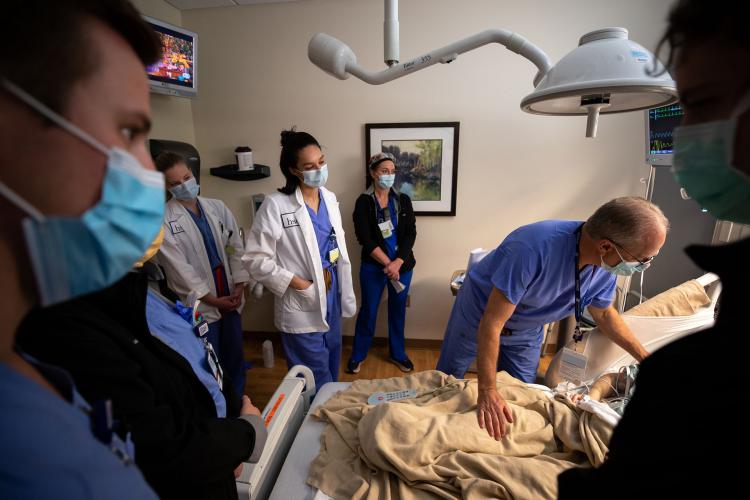
The Leapfrog "A" Grade was years in the making, and by design
The announcement that JPS Health Network has earned a coveted "A" rating for patient safety came as welcome, but not surprising news for the team inside JPS. It was a payoff after years of intentional and dedicated work to improve.
This grade marks a high point in years of effort by JPS to improve its patient care, safety, quality, and experience.
“There’s been tremendous buy-in from our clinical leaders, our physicians and nurses, and the entire hospital staff, to get to this result,” said Dr. G. Robert Stephenson, Vice President and Chief Quality Officer for JPS Health Network. “We’ve managed to improve our performance in so many areas of care, and this grade shows we are yielding great results for our patients.”
So how did JPS get there? How does a public hospital achieve such a milestone, given the challenges that public hospitals typically face in terms of severity of cases they handle, available primary care, public funding, and in the past year, staffing issues.
Dr. Stephenson says it started with a lot of introspection and belief in improvement.
“We’ve got the advantage of a highly aligned team of physicians, nurse practitioners and staff. We are all here because we believe in JPS and in what we are doing.”
"This grade shows we are yielding great results for our patients."
Dr. Stephenson says overall improvement within three major components sparked the eventual result. “First, we made sure we met or exceeded all of the survey items requested in terms of compliance. Second, we have markedly improved our overall performance on patient safety indicators, our PSI-90 if you will. And third, we looked at every opportunity to make the machine work better, and by that I mean our outcomes for patients, our performance, backing each other up and in our reporting accuracy.”
To obtain a Leapfrog grade, JPS turns in a lengthy voluntary survey as one major source of data, with the rest gathered by Leapfrog from federal databases, survey data, and patient satisfaction scores. Not only is it important to improve the quality of care delivered to patients in those areas measured, it’s also important to ensure the accuracy of the data that is reported. Ultimately, the score is calculated on saving lives, saving hospital dollars, and accuracy of diagnoses as well as treatment, documentation and coding.
JPS began participating in The Leapfrog Group surveys in 2015 and initially earned a “D” grade, which is not uncommon for public hospitals. The first levels of improvement came immediately in 2016 with “C” grades. JPS earned a “B” twice in 2018 and once again in the spring of 2021, setting the stage for this year’s “A”.
“We’ve come a long way,” said Lucy Semple, Manager of Clinical Quality for JPS, who coordinates the overall JPS response for The Leapfrog Group’s bi-annual survey. “This is true work that we’ve been putting in for years, and it shows in the data.”
Areas where JPS scored particularly well once again include the category Practices to Prevent Errors. The health network received a perfect score in the subcategories Staff Works Together to Prevent Errors, Safe Medication Administration, and Doctors Ordering Medication Through a Computer.
The Leapfrog results now reflect JPS as a national leader in improving the patient and family experience, improving the quality and outcomes of population health, and improving access to care.
###
